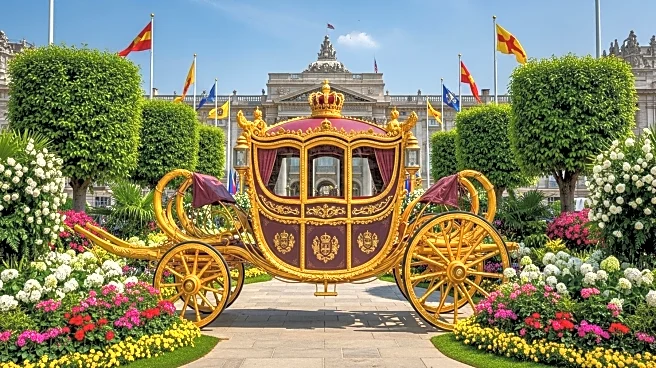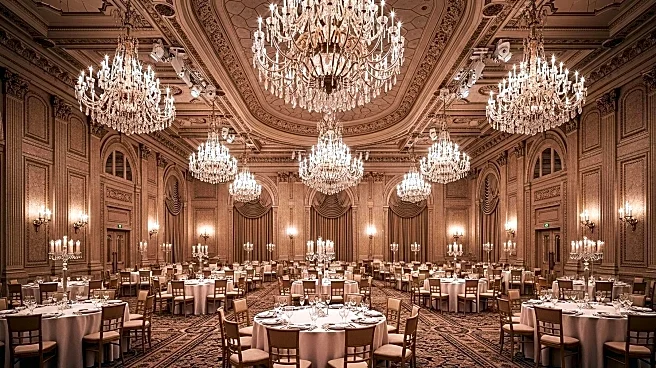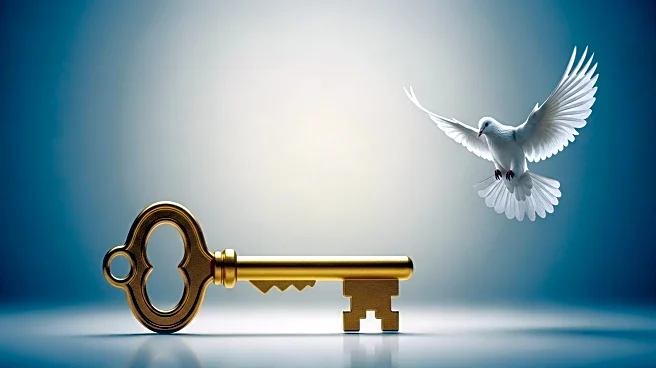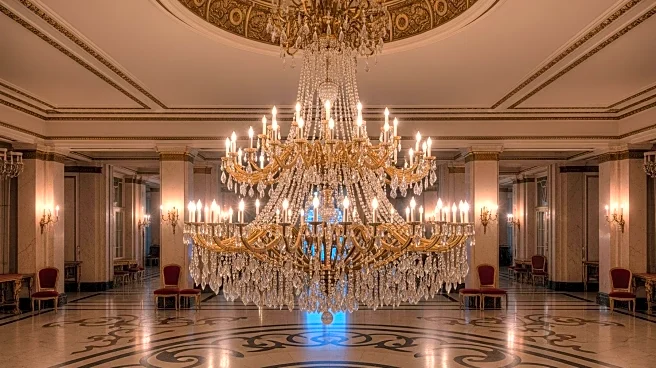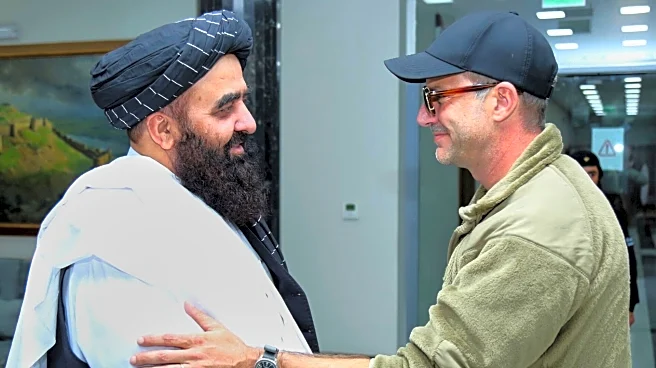What's Happening?
President Trump has announced that the new White House ballroom, initially planned to accommodate 650 people, will now have a capacity of up to 900, marking a 40% increase. This expansion is part of Trump's vision to enhance the White House's facilities for hosting dignitaries and foreign leaders, as he finds the current use of tents on the South Lawn inadequate. The ballroom, which will be located near the East Wing, is expected to be completed by early 2029. Trump has indicated that he will contribute personally to the construction costs, alongside donations from supporters he refers to as 'patriots'. Construction has already commenced, marking the most significant exterior change to the White House since the 1940s.
Why It's Important?
The expansion of the White House ballroom reflects President Trump's ongoing efforts to leave a lasting legacy on the executive mansion. By increasing the ballroom's capacity, Trump aims to enhance the United States' ability to host international events and dignitaries, potentially boosting diplomatic relations. The project also signifies a substantial financial commitment, with Trump and private donors funding the construction. This development could influence public perception of Trump's presidency, highlighting his focus on grandeur and hospitality. Additionally, the ballroom's construction may impact future administrations, providing a state-of-the-art venue for official events.
What's Next?
As construction progresses, the ballroom is expected to be completed by early 2029, aligning with the end of Trump's second term. The project may face scrutiny from political opponents and the public regarding its cost and necessity. However, supporters may view it as a positive enhancement to the White House's capabilities. The ballroom's completion could set a precedent for future renovations and expansions at the White House, potentially influencing how subsequent administrations approach the use of the executive mansion for diplomatic purposes.


